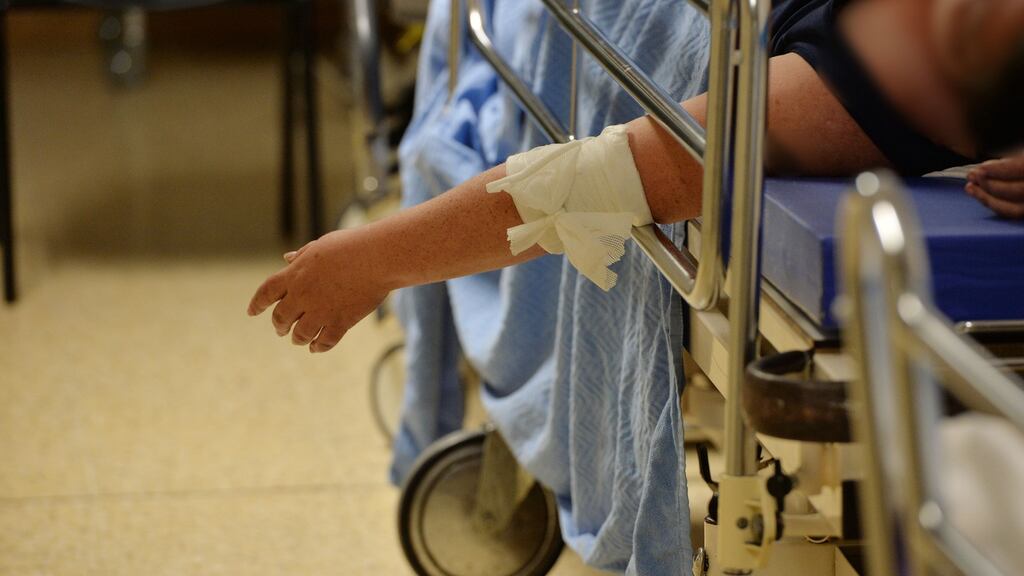Over recent years the Irish health system has intensified the use of metrics to improve performance and has been successful in helping to embed a culture of decision-making on the basis of data rather than on intuition or precedent.
One of the metrics used is the three-times daily count of trolley numbers in our acute hospitals called “Trolley Gar” which reflects the count of patient numbers on trolleys at 8am, 2pm and 8pm daily. Unfortunately this data – and specifically the trolley count at 8am – has become the touchstone for the health service and is often used opportunistically by various stakeholders to criticise the Minister, the Health Service Executive and various other leaders responsible for the delivery of the health system.
The use of this data at 8am for the purpose of making a judgment on the hospital or health service performance is flawed for a number of reasons. One reason is that, at 8am, hospitals are at their most vulnerable having had only emergency diagnostic services available in the previous 12 hours and minimal access to resources required to transfer patients to beds.
In reality, high numbers of patients on trolleys is a stimulus for hospitals to take various escalation measures – including additional ward rounds, cancellation of elective admissions and other initiatives – most of which are set out in the Workplace Relations Commission recommendations of December 2015. The reality is these processes should be embedded in the routines of all acute hospitals and are only moderately successful when employed in a reactive manner.
Wrong focus
There is, however, another perspective on the all-pervasive focus on the daily 8am trolley count. In my view, the following issues are worth noting;
- The trolley count at 8am, when diagnostic and other critical services hospitals have not been functioning at the level required to progress patients through the pathway – either for admission (33 per cent) or for discharge (67 per cent) – is not a fair representation of the performance of hospitals;
- Importantly, low trolley numbers at the 8am count do not necessarily reflect lower attendances but rather better processes over a 24-hour period. For example, the week ending July 29th, 2016, reflects an 8am count of nine on average with 175 average emergency department attendances at Cork University Hospital which is the normal ED activity for the hospital.
It is also important to note that, in some hospitals, good internal processes rapidly reduce the number of patients waiting for a bed in the hours following the 8am count. In CUH the average 8am count of 19 patients per day (year to end of July 2016) was reduced by over 50 per cent by 2pm each day to nine patients.
The unfair representation of the 8am trolley count as a measure of critical deficits in the hospital and the health system is overly simplistic and doesn’t reflect the nuances of the various factors that should be part of the discussion on the efficiency of patient-flow processes.
Easy brickbat
It is clearly in the interest of some stakeholders such as staff representative groups, opposition politicians and private providers to use this data opportunistically to criticise the Minister, the HSE and individual hospitals in support of increased resource allocation.
It might be observed that indeed it is not in the interest of some stakeholders to see a resolution to the “ED crisis” or to optimise patient flow, since that will only serve to reduce the leverage that might otherwise be exerted to secure more staffing (eg Workplace Relations Commission 2015 recommendations on ED) and resources for the placement of delayed discharges (€75 million in 2015), etc.
Whatever the motivation for the use of the 8am trolley count as a proxy for performance, the abuse of this singular metric serves to damage the reputation of individual hospitals and, by extension, of the health system generally.
This metric is a singular measure of the number of patients awaiting admission in our emergency departments. As such, it is not a measure of the patient experience time nor of the efficiency of patient flow in our hospitals.
Too simple
Overall the conclusion might be that a much more nuanced approach is needed to create a more informed debate on the efficiency of the patient pathway and the all-important patient experience in our hospitals. The challenge is for healthcare providers to create that dialogue through the advocacy of national care programmes, by informing the public that these are much more complex issues than are usually portrayed and by encouraging informed debate in the media on these issues.
A measure of the complexity of this issue is that in the case of Cork University Hospital, where about 70,000 patients attend the emergency department each year and 33 per cent require admission, there have been almost 130 different changes in the pathway for emergency patients. Notwithstanding this substantial change programme, much work remains to be done following the reconfiguration of services that has resulted in two emergency departments serving Cork city and county where a short few years ago there were five.
Tony McNamara is chief executive officer of the Cork University Hospital Group. This edited column originally appeared as a blog on cuh.hse.ie










